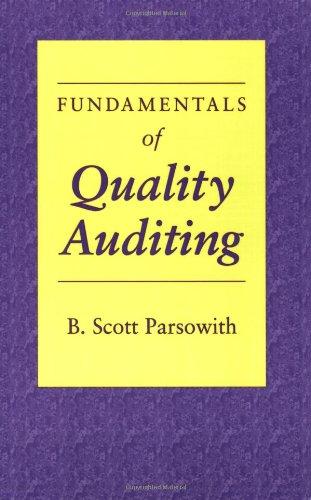For the audit of the financial statements of Matthew Fifo Company, Sandy Given this information, Morrison selects a random sample of 80 Morrison, CPA, has decided to apply nonstatistical audit sampling in the sales invoices from the 4,000 generated during the year and tests of controls and substantive tests of transactions for sales transactions. examines them for exceptions. She notes the following exceptions in Based on her knowledge of Matthew's operations in the area of sales, she her audit schedules. There is no other documentation. decides that the EPER is likely to be 2 percent and that she is willing to (Click the icon to view the exceptions.) accept a 10 percent risk that the true population exception rate is not greater than 8 percent. Read the reguirements. Requirement a. Which of the comments should be defined as an exception? For each invoice listed, indicate whether the comment associated with the invoice represents an exception by selecting "Yes" or "No". (Complete all input fields.) Given this information, Morrison selects a random sample of 80 the 4,000 generated during the year and exceptions. She notes the following exceptions in Requirements There is no other documentation. Abbreviations used: ARO = Acceptable risk of overreliance; EPER= Estimated population exception rate; SER= Sample exception rate; and TER= Tolerable exception rate. a. Which of the comments should be defined as an exception? b. Explain why it is inappropriate to set a single acceptable TER and EPER for the combined exceptions. c. Calculate SER for each attribute tested in the population. (You must decide which attributes should be combined, which should be kept separate, and which exceptions are actual exceptions before you can calculate SER.) d. Calculate TER - SER for each attribute and evaluate whether the calculated allowance for sampling risk is sufficiently large given the 10 percent ARO. Assume TER is 8 percent for each attribute. e. State the appropriate analysis of exceptions for each of the exceptions in the sample, including additional procedures to be performed. For the audit of the financial statements of Matthew Fifo Company, Sandy Given this information, Morrison selects a random sample of 80 Morrison, CPA, has decided to apply nonstatistical audit sampling in the sales invoices from the 4,000 generated during the year and tests of controls and substantive tests of transactions for sales transactions. examines them for exceptions. She notes the following exceptions in Based on her knowledge of Matthew's operations in the area of sales, she her audit schedules. There is no other documentation. decides that the EPER is likely to be 2 percent and that she is willing to (Click the icon to view the exceptions.) accept a 10 percent risk that the true population exception rate is not greater than 8 percent Read the For the audit of the financial statements of Matthew Fifo Company, Sandy Given this information, Morrison selects a random sample of 80 Morrison, CPA, has decided to apply nonstatistical audit sampling in the sales invoices from the 4,000 generated during the year and tests of controls and substantive tests of transactions for sales transactions. examines them for exceptions. She notes the following exceptions in Based on her knowledge of Matthew's operations in the area of sales, she her audit schedules. There is no other documentation. decides that the EPER is likely to be 2 percent and that she is willing to (Click the icon to view the exceptions.) accept a 10 percent risk that the true population exception rate is not greater than 8 percent. Read the reguirements. Requirement a. Which of the comments should be defined as an exception? For each invoice listed, indicate whether the comment associated with the invoice represents an exception by selecting "Yes" or "No". (Complete all input fields.) Given this information, Morrison selects a random sample of 80 the 4,000 generated during the year and exceptions. She notes the following exceptions in Requirements There is no other documentation. Abbreviations used: ARO = Acceptable risk of overreliance; EPER= Estimated population exception rate; SER= Sample exception rate; and TER= Tolerable exception rate. a. Which of the comments should be defined as an exception? b. Explain why it is inappropriate to set a single acceptable TER and EPER for the combined exceptions. c. Calculate SER for each attribute tested in the population. (You must decide which attributes should be combined, which should be kept separate, and which exceptions are actual exceptions before you can calculate SER.) d. Calculate TER - SER for each attribute and evaluate whether the calculated allowance for sampling risk is sufficiently large given the 10 percent ARO. Assume TER is 8 percent for each attribute. e. State the appropriate analysis of exceptions for each of the exceptions in the sample, including additional procedures to be performed. For the audit of the financial statements of Matthew Fifo Company, Sandy Given this information, Morrison selects a random sample of 80 Morrison, CPA, has decided to apply nonstatistical audit sampling in the sales invoices from the 4,000 generated during the year and tests of controls and substantive tests of transactions for sales transactions. examines them for exceptions. She notes the following exceptions in Based on her knowledge of Matthew's operations in the area of sales, she her audit schedules. There is no other documentation. decides that the EPER is likely to be 2 percent and that she is willing to (Click the icon to view the exceptions.) accept a 10 percent risk that the true population exception rate is not greater than 8 percent Read the









